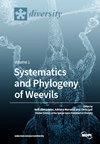Characterization of the Root Nodule Microbiome of the Exotic Tree Falcataria falcata (Fabaceae) in Guangdong, Southern China
IF 2.1
3区 生物学
Q2 BIODIVERSITY CONSERVATION
引用次数: 0
Abstract
Falcataria falcata is an exotic tree species that was imported to southern China around 1940 and has been widely planted in the Guangdong province of China. Using the 16S rRNA amplicon sequencing approach, we investigated the composition of the bacterial endophytes in the root nodules of naturally grown F. falcata and elucidated the core bacterial endophyte group. Across all samples, there were 575 bacterial genera and 29 bacterial phyla. Proteobacteria accounted for 42–90% relative abundance in all regions. Notably, Bradyrhizobium, Paucibacter, Rhizobium, and Mesorhizobium were consistently detected in all regions studied. Among these, Bradyrhizobium (13–37%) and Paucibacter (1–34%) were the dominant genera. Despite the differences in endophytic amplicon sequence variants (ASVs) across all regions, our results demonstrate that some ASVs, which have been termed herein as commonly shared core ASVs (c-ASVs), still inhabit F. falcata root nodules across multiple regions simultaneously. More importantly, some c-ASVs dominated in F. falcata root nodules across multiple regions. This study demonstrated the consistency of the bacterial endophyte communities of F. falcata root nodules.广东外来树种Falcataria falcata (Fabaceae)根瘤微生物组的研究
Falcataria falcata是一种1940年左右传入中国南方的外来树种,在中国广东省广泛种植。采用16S rRNA扩增子测序方法,研究了自然生长的falcata根瘤中细菌内生菌的组成,并明确了核心细菌内生菌群。在所有样本中,有575个细菌属和29个细菌门。变形菌门在所有区域的相对丰度为42 ~ 90%。值得注意的是,在所有研究区域都一致检测到缓生根瘤菌、少菌、根瘤菌和中根瘤菌。其中,缓生根瘤菌(13-37%)和少毛杆菌(1-34%)为优势属。尽管所有地区的内生扩增子序列变异(asv)存在差异,但我们的研究结果表明,一些asv,即本文所称的共同核心asv (c- asv),仍然同时存在于多个地区的镰孢根瘤中。更重要的是,一些c- asv在falcata根结节中占主导地位,分布在多个区域。本研究证实了镰形莲根瘤细菌内生菌群落的一致性。
本文章由计算机程序翻译,如有差异,请以英文原文为准。
求助全文
约1分钟内获得全文
求助全文
来源期刊

Diversity-Basel
Environmental Science-Ecological Modeling
CiteScore
3.40
自引率
12.50%
发文量
925
审稿时长
11 weeks
期刊介绍:
Diversity (ISSN 1424-2818) is an international and interdisciplinary journal of science concerning diversity concept and application, diversity assessment and diversity preservation. It is focused on organismic and molecular diversity. It publishes reviews, regular research papers and short notes in the regular issues. Related news and announcements are also published. Our aim is to encourage scientists to publish their experimental and theoretical results in as much detail as possible. Therefore, there is no restriction on the length of the papers. Full experimental details must be provided so that the results can be reproduced.
 求助内容:
求助内容: 应助结果提醒方式:
应助结果提醒方式:


